MAY THERE BE LIGHT
All over the world where Hindus predominantly live, Deepavali is celebrated with pomp and grandeur as they celebrate light over darkness. Illuminating the streets of Brickfields in the heart of KL City, Deepavali takes centre stage with a myriad of colours, scents and sight to behold!
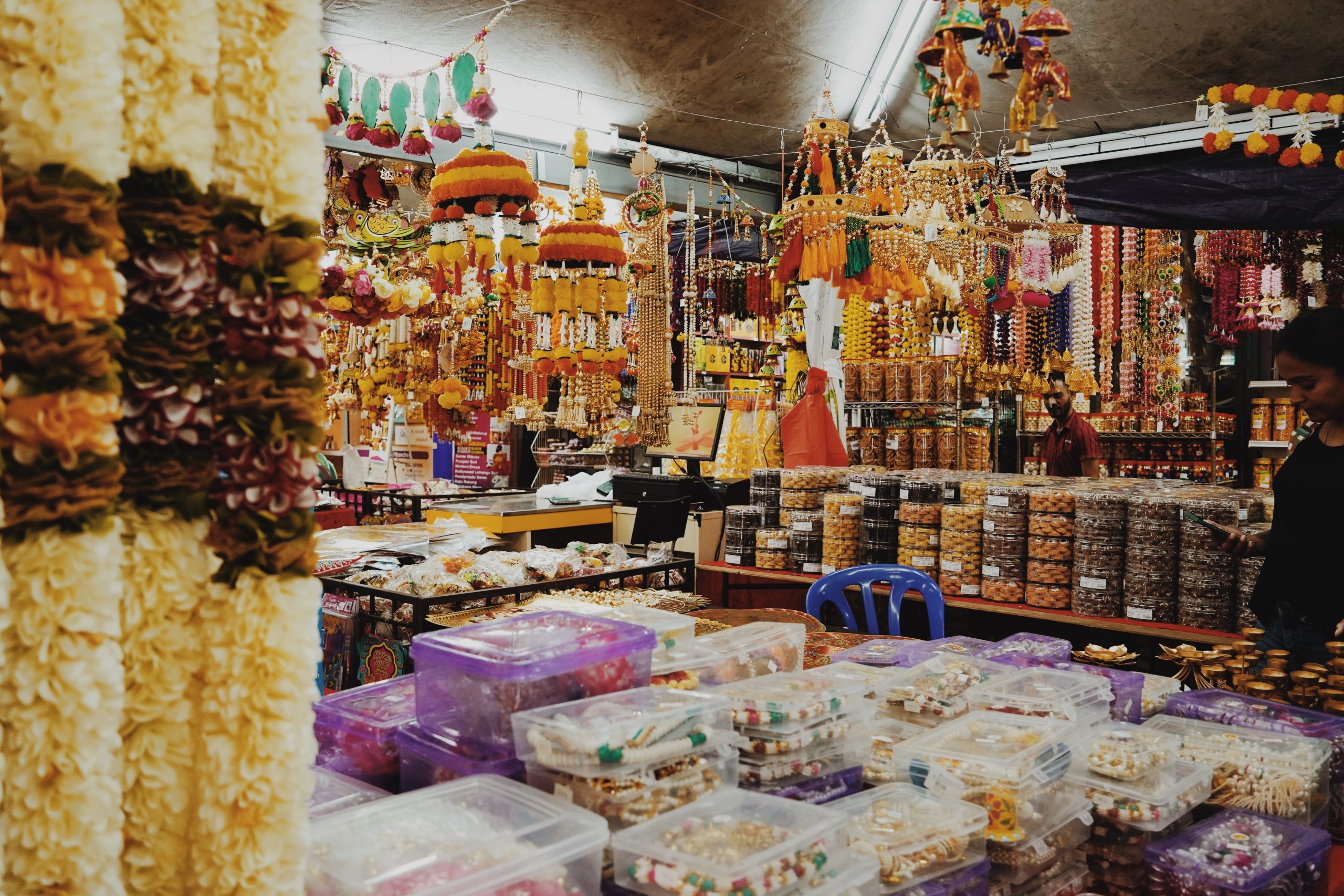
The fascinating light installations, Instagram-worthy decorations and smell of freshly made food permeating the air will surely draw you to one of the many restaurants that line the streets of Brickfields to celebrate with the locals. Follow the scent trail of floral garlands and incense while browsing through stalls hawking gold jewellery, traditional snacks, embroidered sari (traditional Indian womenswear) and ornamental decorations while you soak in the lively atmosphere.
As one of the major cultural festivals in Malaysia, Deepavali (also known as “Diwali” or the “Festival of Lights”) is a celebration that marks the triumph of good over evil. It’s when thousands of Hindu families around the country, and across the world transform their homes into beacons of light, exchange gifts, share feasts and perform pooja (prayers) to deities such as Lakshmi, the goddess of fertility and prosperity.
Brickfields is a neighbourhood located on the western part of central Kuala Lumpur, Malaysia and perhaps best known as Kuala Lumpur’s Little India due to the high percentage of Indian residents and businesses.

A NOT SO SLEEPY PAST
According to history book, a flood swept through Kuala Lumpur in the wake of a disastrous fire in 1881. These successive problems destroyed the town’s structures of wood and thatching and in a swift response to that, Frank Swettenham, the British Resident of Selangor, required that buildings be constructed of brick and tile. Hence, Kapitan Yap Ah Loy bought a sprawling piece of real estate, now called Brickfields, for the setting up of a brick industry which would spur the rebuilding of Kuala Lumpur.
Later the area was developed by Yap Kwan Seng, the fifth and last Kapitan Cina of Kuala Lumpur. As a businessman, he foresaw an increased demand for bricks in fast-growing Kuala Lumpur and established a kiln in the district. The area soon became the centre for brick-making in the early days because the whole area was a clay pit and good quality bricks are made from clay. Therefore, Brickfields became synonymous with good quality bricks.
Brickfields also used to be the site of the main depot for Keretapi Tanah Melayu (KTM) (Malayan Railway) during the administration of the British. The British authorities brought in people from Sri Lanka to work the railway and the depot. Many lived in quarters around Brickfields. Since then, the Indian community have lived and remained here and became citizens of Malaysia. Some of the old quarters were last found found around Jalan Rozario. Today, what’s left are just memories of those quarters which has since been transformed into a buzzing transportation hub called KL Sentral, the city’s central railway hub.
CULTURE COMES ALIVE
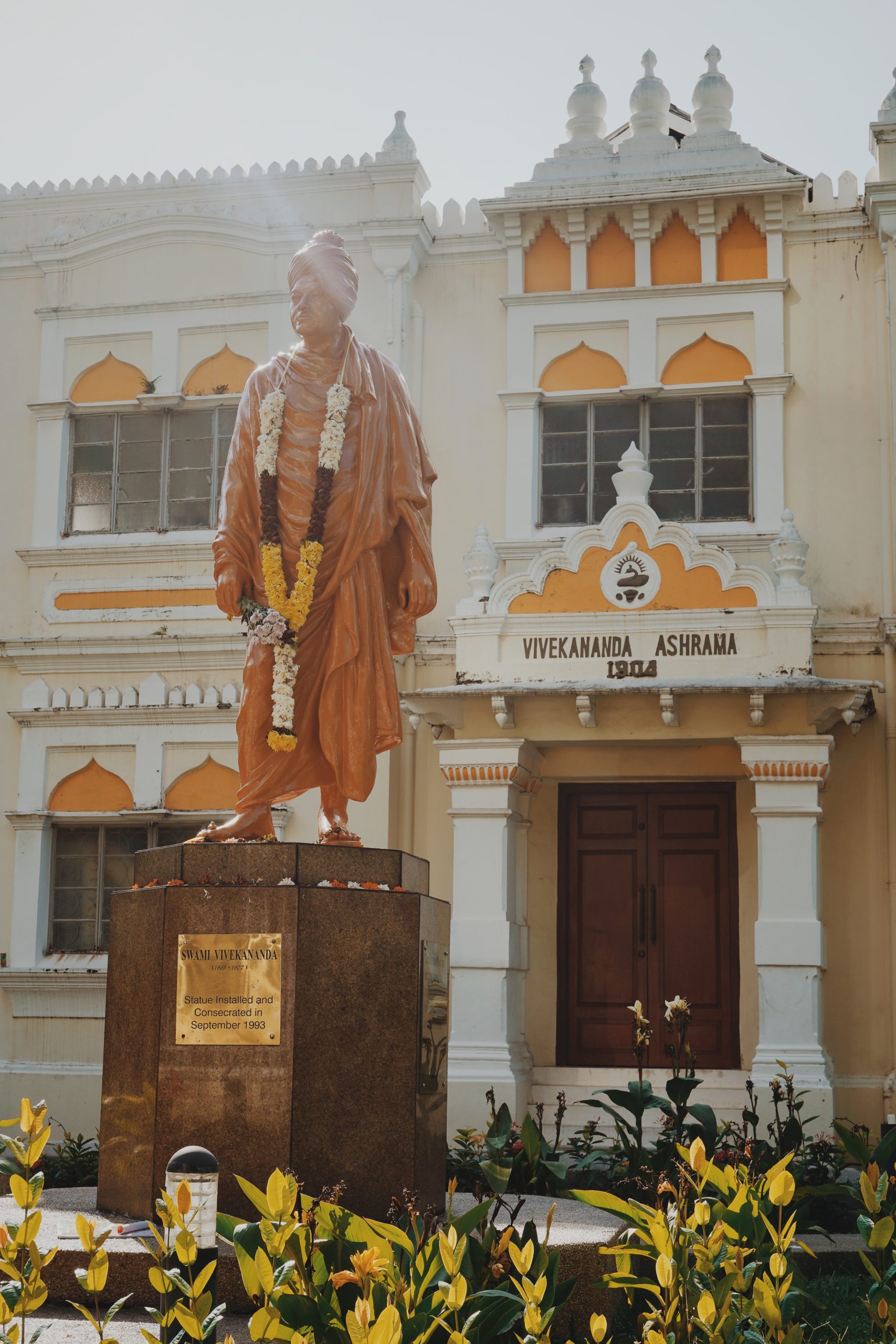
Vivekananda Ashram, Brickfields
While records show that it was the lush traveller’s palm tree and mangosteens that stole the heart of Swami Vivekananda during his travels through Asia in the late 1800s, it was really his teachings that would go on to capture the hearts and minds of thousands in the region for over a hundred years.
More than a century after his Malaya visit, the Vivekananda Ashram — built in 1904 — continues to be the calm in the middle of bustling, modern- day Brickfields.
Vivekananda, known in his pre-monastic life as Narendranath Datta, was on his way to the World Parliament of Religions in Chicago in 1893. Vivekananda had taken notes while moving through Asia, observing in his notes “the beautiful fan-like palm, called the traveller’s palm, grows here in abundance and the bread-fruit tree everywhere.”
He had visited Penang and Singapore and was immediately enchanted by the landscape of this region, observing how Penang was once faced with the threat of pirates, and how he found the people of Singapore “not half so dark as the people of Madras.”
While this revered individual was charmed by Southeast Asia’s landscapes, his teachings had inspired thousands to continue his work in improving the lives of the disadvantaged and the poor. His teachings had become so great an influence in local communities that followers paid tribute to him through the establishment of the Vivekananda Ashram in Brickfields in 1904.
The ashram is said to have been built by Sri Lankan (Jaffna) Tamil migrants to pay tribute to Vivekananda. This building was part of an expansion of the Ramakrishna Mission in Singapore in 1896. Although there was no evidence of him visiting Kuala Lumpur at that time, the movement was driven to continue his work in educating and supporting the underprivileged through this ashram.
Located south of Kuala Lumpur city center, Brickfields’ Little India is a stone’s throw away from KL Sentral, Malaysia’s main transportation hub. Getting here has never been easier and it boasts delightful Indian cuisine. Brickfields is tagged as a “Divine Location” as it houses various religious structures.

Budhist Maha Vihara
The Buddhist Maha Vihara was founded by the Sinhalese community based in Kuala Lumpur and the surrounding areas in 1894 to provide a place of worship in their Sri Lankan Theravada tradition. Most of Sinhalese were either traders or artisans and skilled workers brought in from Ceylon by the British Administration to develop the colonial Malayan Civil Service.
Sri Kandaswany Kovil
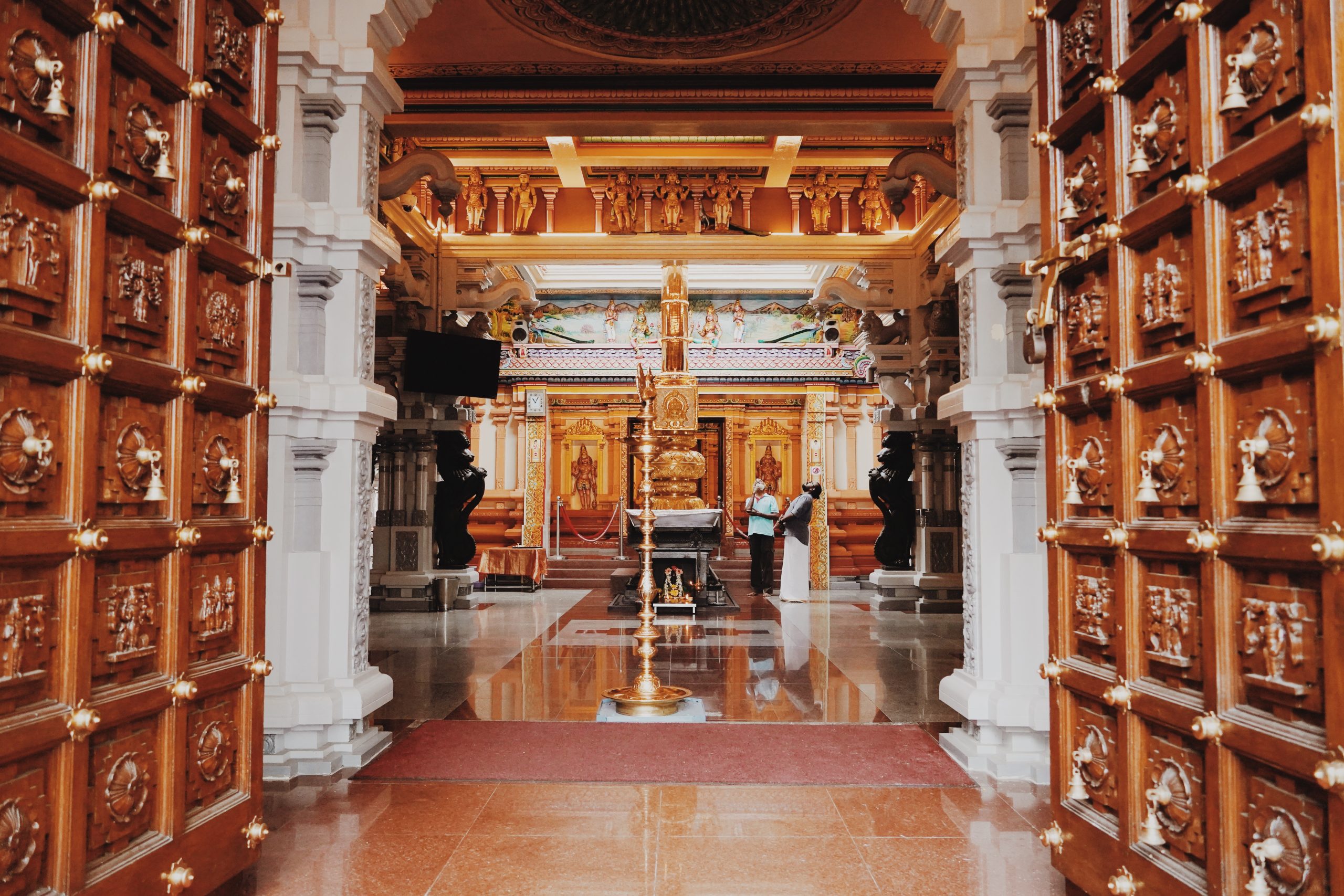
Sri Kandaswamy Kovil is a Hindu temple located along Jalan Scott, Brickfields in Kuala Lumpur, Malaysia. The temple is over a century old. It is one of the most prominent Sri Lankan Tamil or Ceylonese Tamil temples in Malaysia. It is huge and showcases rich Sri Lankan Tamil architecture and has become a popular tourist attraction in Kuala Lumpur. The temple architecture is inspired by the Nallur Kandaswamy temple in Jaffna, Sri Lanka. It is reputed to be one of the most orthodox temples in Malaysia where rituals are followed strictly in accordance the rules of Saiva Agama Scriptures.
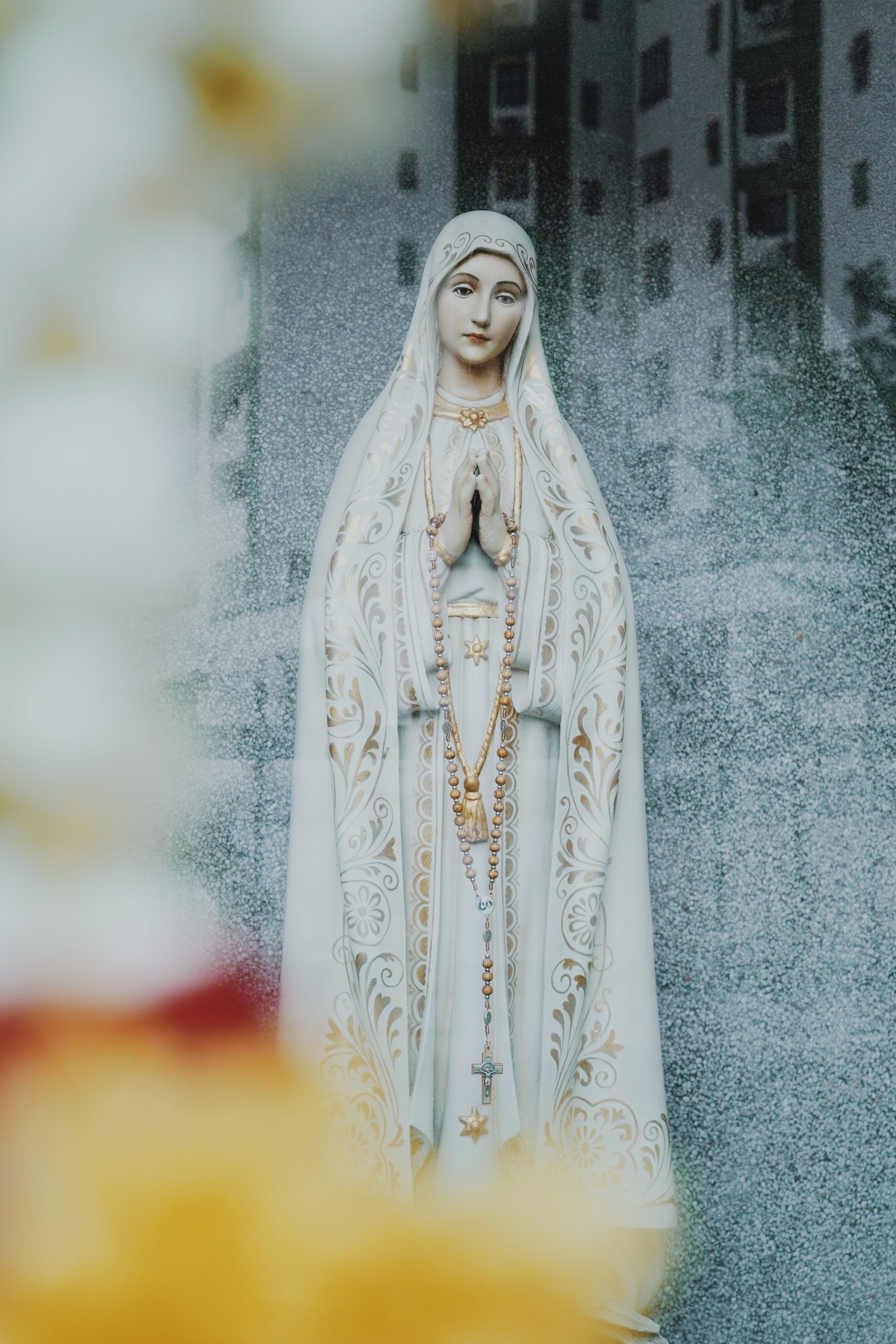
Church of Our Lady of Fatima
The Church of Our Lady of Fatima, with its rather modern architecture, was established in 1963 to serve a growing Catholic community in and around the Brickfields area. It is one of the four churches located in the vicinity of the city centre. This Church today serves a multi-ethnic and multi-national community of over 1,500 parishioners that reside in and around the areas of Brickfields, Bangsar, Taman Seputeh, and Old Klang Road.
Sam Kow Tong Temple
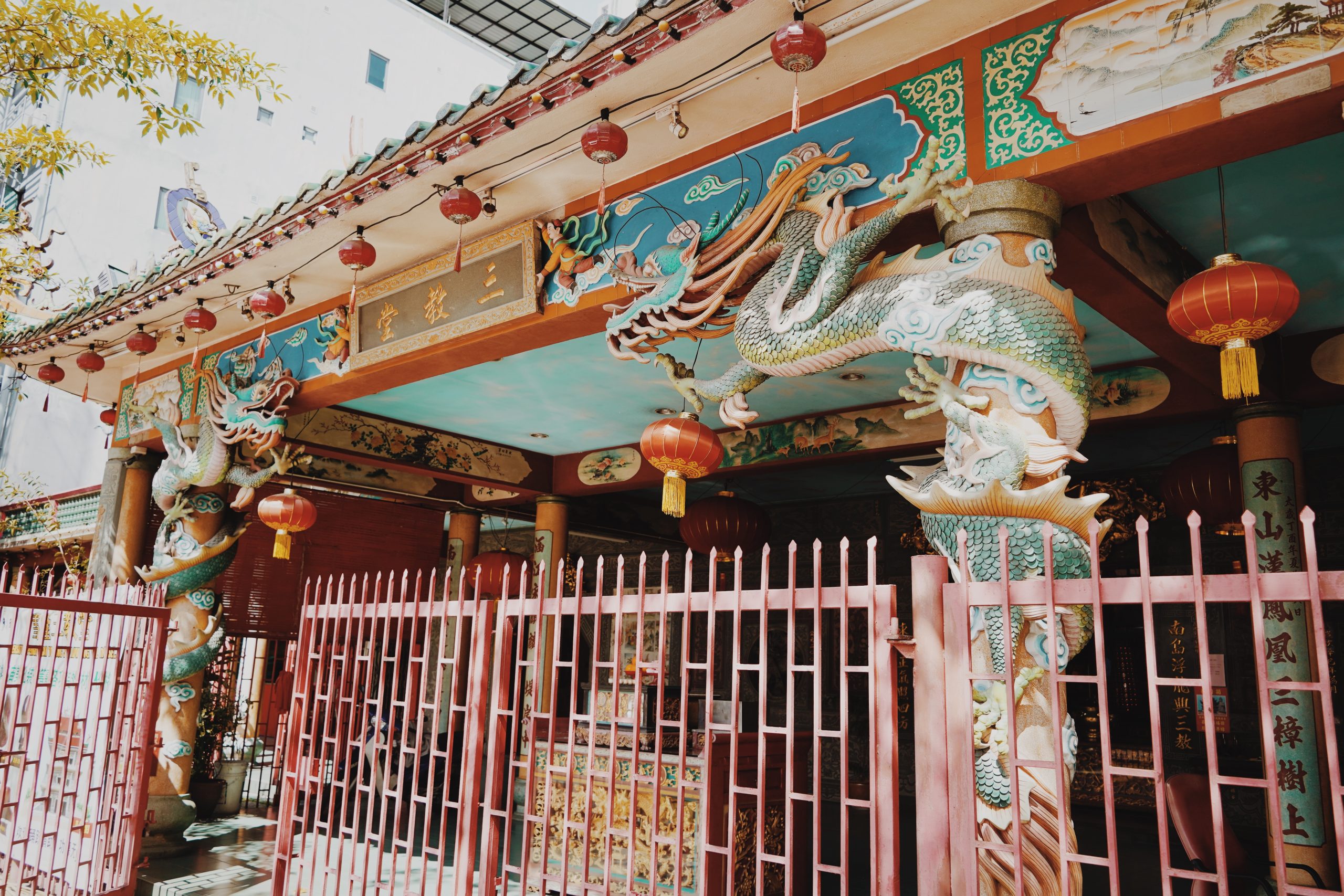
Finally, another significant landmark in Brickfields is the distinctive Chinese Temple known as Sam Kow Tong Temple, which means “Hall of Three Teachings” along Jalan Thambillay. The Temple was founded in 1916 and belonged to the Heng Hua clan in Hokkien Province. There is also another Chinese Temple, Seng Hong Tokong along Jalan Berhala.